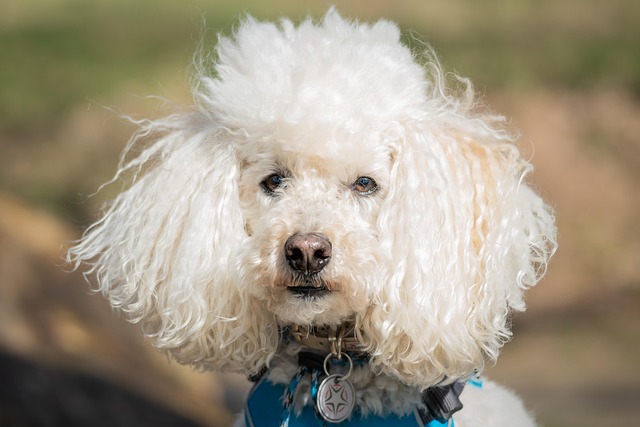
How to bathe your dog without a bathtub?
So your dog decided to take a dirt nap in the mud pit, and you’re staring at your tiny apartment bathroom thinking, “There’s no way.” Trust me, I’ve been there.
When I first started working with dogs professionally, I was amazed by how many pet parents asked me whether their furry companions could see the bright purple toy they'd just bought. It's a question that comes up more often than you'd think, and honestly, it got me curious enough to dive deep into the science behind canine color perception. The answer isn't as straightforward as you might expect, but it's absolutely fascinating once you understand what's really happening behind those adorable eyes.
Most people assume dogs see the world in black and white – a myth that's been floating around for decades. Actually, dogs do see colors, just not the same way we do. Think of it like this: where humans have three types of color receptors (called cones) in our eyes, dogs only have two. This means their color vision is similar to what humans with red-green colorblindness experience. They're not living in a grayscale world, but their color palette is definitely more limited than ours.
Here's where it gets interesting when we talk about purple specifically. Dogs can see some colors quite well – particularly blues and yellows. These colors appear vibrant and distinct to them. However, when it comes to purple, things get a bit more complicated. Since purple is created by combining red and blue light, and dogs have difficulty distinguishing reds from greens, they don't perceive purple the way we do. Instead, that beautiful purple toy you picked out likely appears as a shade of blue to your dog.
Recent research from veterinary ophthalmologists has given us incredible insights into exactly what dogs can and cannot see. Dr. Neitz at the University of Washington conducted groundbreaking studies using behavioral tests with dogs, training them to distinguish between different colored panels. The results were eye-opening – literally. Dogs consistently struggled to differentiate between red, orange, and yellow-green colors, but they excelled at distinguishing blues from yellows and other colors in their visible spectrum.
What's particularly fascinating is that dogs' color vision isn't just about the number of cone cells they have. The wavelengths they can perceive fall roughly between 420 and 560 nanometers, which translates to a spectrum ranging from blue through yellow. Purple, which requires perception of both blue and red wavelengths, falls partially outside this range. The red component of purple is essentially invisible to dogs, so they're only seeing the blue portion of that color combination.
The biological explanation behind this lies in the structure of the canine eye itself. Dogs have two types of cone photoreceptors – one sensitive to blue wavelengths and another sensitive to yellow wavelengths. Humans have a third type that detects red wavelengths, which is what allows us to see the full spectrum of colors, including purple. Without that red-sensitive cone, dogs simply can't process the full range of light wavelengths that create purple in our perception.
But here's something that might surprise you – dogs actually have some visual advantages over humans. Their eyes contain more rod cells, which are responsible for detecting light and movement. This means they have superior night vision and are incredibly good at spotting motion, even in low-light conditions. They also have a wider field of view than humans, typically around 240 degrees compared to our 180 degrees. So while they might not see your purple ball as purple, they're probably much better at tracking it as it bounces across the yard at dusk.
Understanding your dog's color perception can actually make you a better pet parent. When choosing toys, consider going for bright blues and yellows rather than reds, oranges, or purples. A yellow tennis ball will stand out much more clearly against green grass than a red one, which might appear brownish or grayish to your dog. I've seen this make a real difference in fetch games – dogs seem more engaged and successful when they can clearly distinguish their toys from the background.
For training purposes, this knowledge is incredibly valuable. If you're using colored cones or markers for agility training, stick with blue and yellow combinations. Many professional dog trainers have started incorporating this science into their methods, and the results speak for themselves. Dogs respond more quickly and accurately when the visual cues are in colors they can actually perceive distinctly.
Indoor environments matter too. While dogs rely heavily on their incredible sense of smell and hearing, visual cues still play a role in their daily navigation and comfort. Consider this when choosing bedding, toys, or even the colors of food and water bowls. A bright blue bowl might be easier for your dog to locate than a red one, especially in dim lighting conditions.
There's also an interesting consideration for dog toys and accessories. Many manufacturers are now designing products with canine color vision in mind. You'll find toys specifically created in blue and yellow combinations, marketed as being more visible to dogs. While the marketing might sometimes overstate the benefits, there's solid science backing up the concept that dogs will respond better to toys in colors they can actually see clearly.
One thing I want to clarify is that dogs don't feel deprived by their different color vision. They've evolved this way for good reasons – their ancestors needed to be excellent hunters and survivors, not art critics. Their visual system is perfectly adapted to their needs, emphasizing motion detection and low-light vision over color discrimination. They're not missing out on anything; they're just experiencing the world differently than we do.
It's worth noting that individual dogs might have slight variations in their color perception, just like humans do. Some dogs might be better at distinguishing certain colors than others, and age can also play a factor. Older dogs might experience changes in their vision that affect color perception, similar to how cataracts or other age-related eye conditions can impact human color vision.
So, can dogs see purple? The straightforward answer is no – not the way we see purple. They're seeing something closer to blue when they look at purple objects. But this doesn't mean your purple-loving pup is missing out on life. Dogs experience their world through an incredible combination of senses, with smell being their primary way of understanding their environment, followed by hearing and then vision.
The next time you're shopping for dog toys or setting up training equipment, remember that your furry friend is seeing the world through a different lens – quite literally. Choose colors that will stand out in their visual spectrum, and you might just notice improved engagement and responsiveness. After all, understanding our dogs better can only strengthen the amazing bond we share with them. And honestly, isn't it pretty wonderful that we can use science to become even better companions to our four-legged family members?

So your dog decided to take a dirt nap in the mud pit, and you’re staring at your tiny apartment bathroom thinking, “There’s no way.” Trust me, I’ve been there.

Imagine packing for a sunny beach day with your golden retriever. You’ve got the ball, the water bowl, and your own tube of sunscreen—but can you slather some on your furry friend?

Picture your sunbathing Labrador sprawled on the patio – adorable, right? But when that Arizona afternoon hits 95°F, that same scene becomes dangerous.

Picture this: You’ve just slipped on your favorite black sweater, ready to head out for coffee. Your dog, with a wagging tail and a glint in their eye, bounds over for a cuddle.

You've probably stared at that row of pet store treatments and wondered—are flea and tick preventives just another gimmick?The truth is,skipping these essential products can turn a peaceful afternoon with your furry friend into a nightmare of itching,

So, you've welcomed a furry friend into your home – fantastic! Now you're staring at that brush or wondering about bath time.